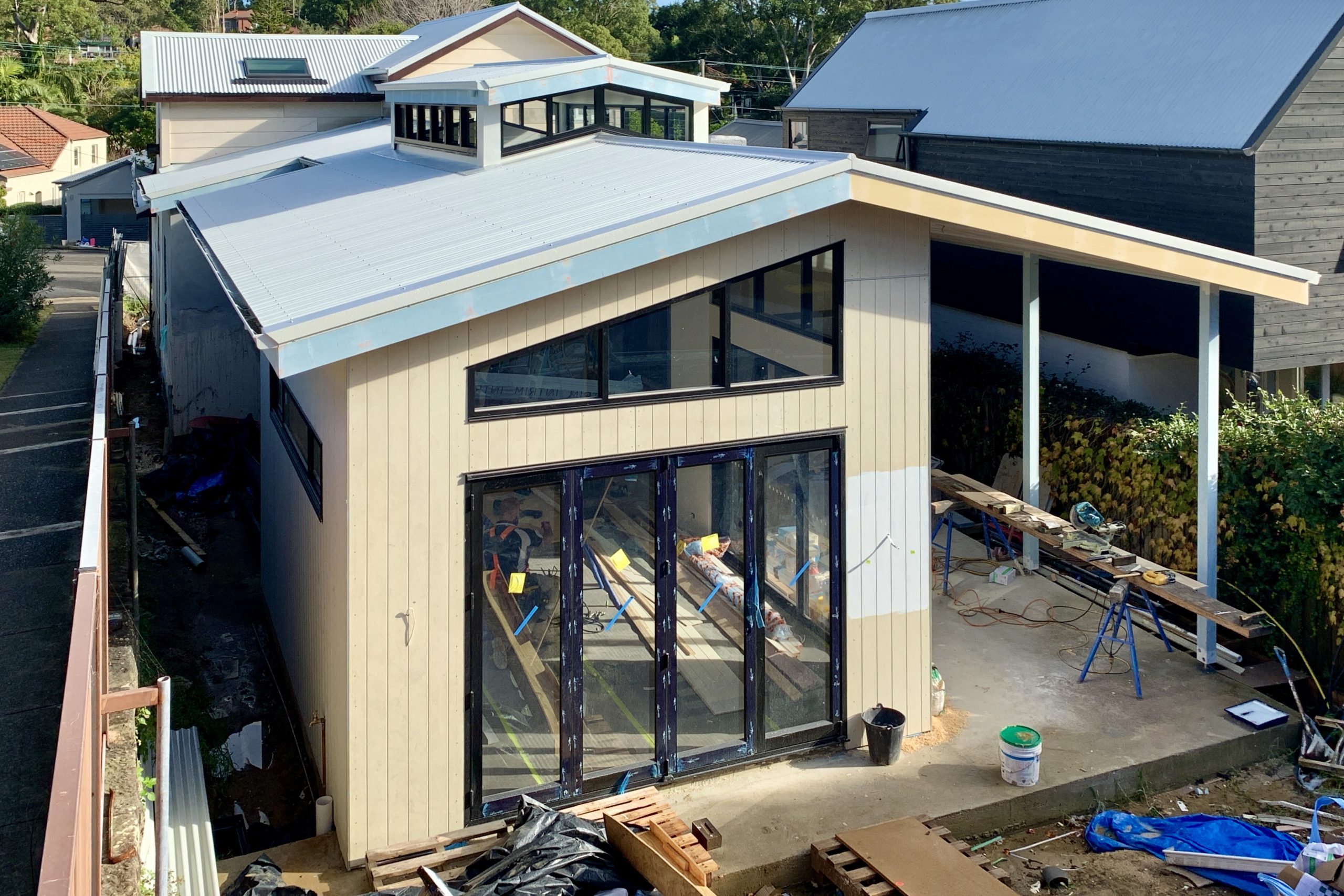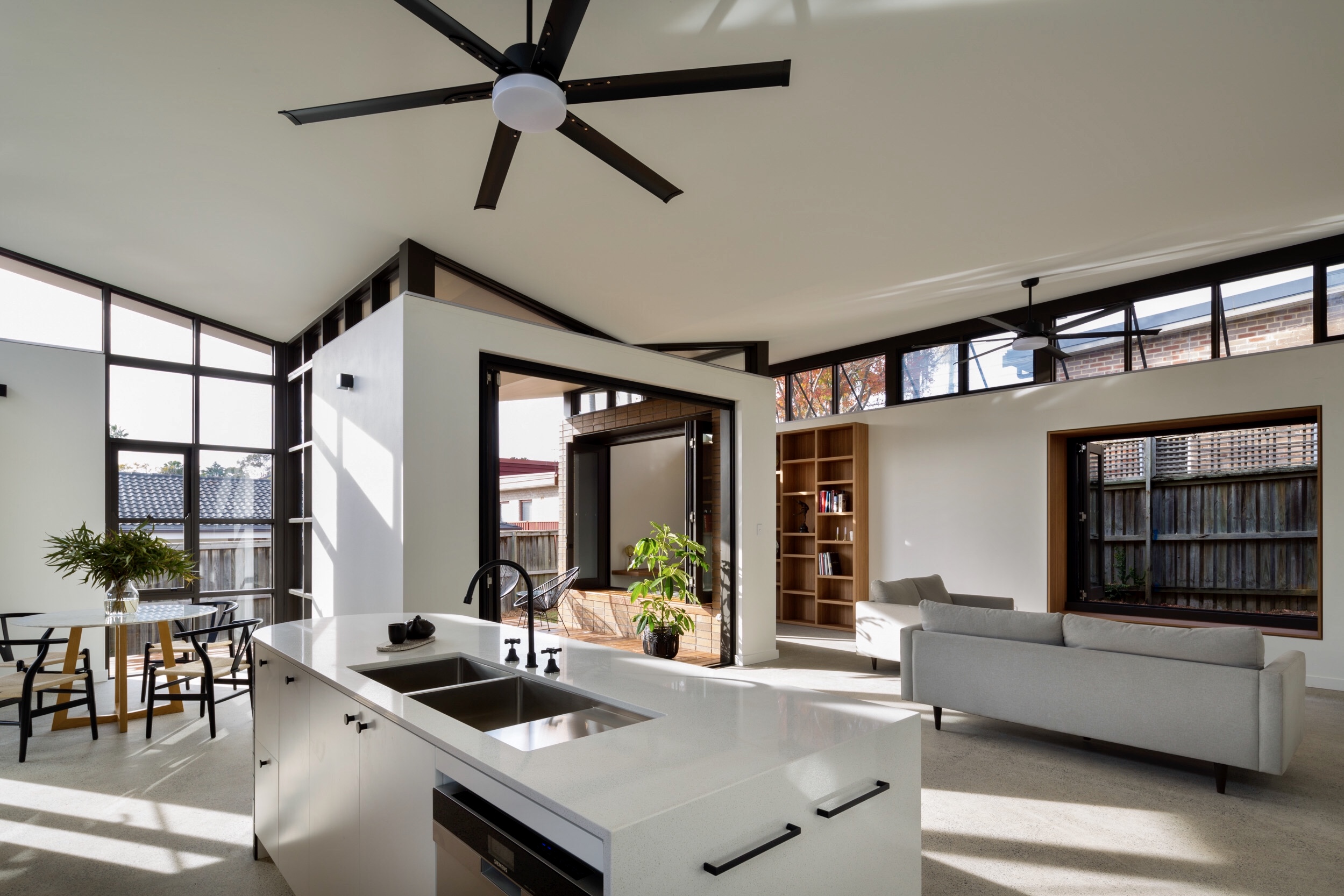Building a home! Here are some tips to help you scale down costs.
10 June, 2020 | Mikala Chapman

Tips to scaling down costs when building
We are a residential building company based in Sydney. Primarily we focus on architectural construction and have been building architecturally designed homes around the suburbs of Sydney for many years now.
One of the biggest problems that we find our clients have, is having grand ideas and aspirations for their home, but like many, not quite the budget to achieve them.
Do not lose hope, there are many ways to scale your costs down while not missing out on building your dream designer home.
You can achieve great budget savings by making small changes to some of your design choices. With careful consideration to what you are willing to sacrifice and what is a non-negotiable you can find ways to bring costs down without compromising on your overall design objective.
Below I will go through just a few of the areas where you can potentially tighten your budget, hopefully these will get you thinking about where else in your build you can save, in order to get the designer dream items you simply have to have.
Firstly, think about the size of your home. A house that is built for the sake of being large may mean that all of the unique design ideas thought about at the concept stage may have to be stripped away to meet your budget. Remember the larger the house the more volume of materials is required, more flooring, more paint, more of everything. By designing a home that is unnecessarily large, you may miss out on creating a smaller but amazing bespoke home.
Roof design
A simple design consideration such as the shape of your roof can have a large impact on your budget. Naturally, the fancier the roof the more it is going to cost. If the design has more valleys, gutters, hips, downpipes and flashings the more it will hurt your budget. A simple design such as a flat roof will ultimately save you money.
Custom Detailing
It would be every architect and designers dream to be able to craft each home they design with unique bespoke details in every area of the home, but the hard truth is custom-designed and built features cost big bucks.
Without a doubt bespoke detailing is a beautiful luxury, I’m a firm believer everyone should encompass some custom detailing into their design. By doing this you create individuality and uniqueness to your home, and don’t forget a touch of opulance because who doesn’t want that.
When it comes to scaling down costs this is where you need to be smart about what features you want custom designed and where you can be satisfied with off the shelf products. For example, I would certainly consider using a skilled joiner to create a custom tv cabinet, kitchen or bookcase. All of these items are in the main living spaces and are visual to everyone who visits the home. To save on costs, joinery in a laundry or even a walk-in robe you could use off the shelf products, these areas are not always on show and are great places to save on your budget.
Window Frames
Door and window frames are a huge expense when building. There are many different options when it comes to choosing window frames, all at vastly different costs. This could be an area where you can save on costs depending on what look you are going for or how much you are willing to compromise on quality.
Window frames come in either timber, aluminium or if cost is no issue, slim-profile steel are simply beautiful. There are many ways to keep costs down, but choosing a cost-effective profile is perhaps the easiest. Aluminium frames, for example, come in three different profiles – commercial, semi-commercial and residential – with the latter being considerably cheaper than the others.
Ceiling heights
By sticking to standard-height ceilings for most areas of your home and choosing one or two main rooms to have an over-sized dramatic ceiling you will save a considerable amount on your budget.
Ceilings that are 2400-, 2550- or 2700-millimetre-high can use two sheets of plaster on top of each other with only the one join. However, if you were to choose a 3000-millimetre-high ceiling, even though you have only slightly increased the height, you would be charged for an entire extra plaster sheet. Multiply this across all walls plus the additional labour and this can certainly add up.
Fixtures and Fittings
There are so many ways to keep costs under control in this area. Fixtures and fittings include items such as tiles, bench tops, light switches and tap wear, the list goes on and on.
Tiles
Choosing multiple types of tiles for your walls and floors can really add to your cost, especially if you have chosen patterned or unusually shaped tiles. By opting to go with several tile choices your tiler will need to spend more time getting the pattern and layout right and there is potential for extra wastage. Between tile costs and the additional labour, multiply this by several bathrooms and the cost can soon blow out.
To get the designer look but keep your costs in check choose a single tile shape and colour for your walls and floors, it will reduce wastage costs, your tiler should charge you less and you may get a bulk buy discount when purchasing your tiles.
If you love a patterned tile go for a simple shape, this will save in laying time and wastage.
Another option if you love the look of natural stone is to consider going for a ceramic tile, they will give you a similar look but at a far cheaper price.
Finally, if you have your heart set on a particular tile or pattern, consider having it in just one of your bathrooms or wet rooms, stick with a classic and simpler tile for the laundry or the kid’s bathroom.
PowerPoints and Light switches
You might be surprised, but these items have become a real fashion statement of late, but choosing non-standard switches and power points can really add to your costs.
There are many different styles on the market, from ones that light up to censored lights to unique flush line styles, but essentially, they all serve the same purpose.
If you have your heart set on statement light switches, consider putting them in the main living spaces and use standard switches inside cupboards and places that are not really seen.
Timber flooring
If you want to go with solid timber flooring choosing readily available species such as Australian Hardwood or Victorian Ash to keep your costs down. Always remember, that the price quoted will be per square meter for the timber only, you will also need to add the cost of labour for the laying and staining.
An alternative to solid timber is timber laminate, these are a cost-effective solution while still giving you a beautiful timber look. Timber laminate is a thin layer of timber veneer on top of a cheap timber interlay. They come prefinished which means they are already stained and are quick to lay.
Timber laminate comes in a large variety of species and colours so there are many different looks to choose from but be sure to ask your supplier to specify the thickness of the veneer component. Some inferior timber laminates have very thin veneers that are easily scratched and dented. Laminates with a thicker veneer are much better quality and will allow you to sand back the floors a couple of times to refresh your boards, which is a better long-term investment.
Taps
This space has come a long way, tap wear is now considered a real feature in a home. They come in an array of finishes and styles from white to black to the very on-trend champagne, bronze and gunmetal finishes. Taps can be a large expense depending on what it is you are after and just how many you may need. For practical rooms such as the laundry, keep costs down by choosing a standard tap design. Save your money for public areas such as the kitchen or guest bathroom.
The way in which you choose to mount a tap will also affect your cost. A wall-mounted tap will have to be installed in the early stages of a build, prior to the vanity or splashback being ordered. Your plumber will need to set out where your tap wear is going to go early on as it has implications down the track when finishing these spaces.
You also need to choose the tile or stone thickness for your splashback before the tap is installed. This is because the plumber needs to know the thickness so that they can install the tap in the stud-work at the right depth. Changing your stone or tiles choices later in the build could have implications if the plumber has already mapped out your tap wear based on your original choice.
By mounting a tap on a basin, it is cheaper than on a bench top as you will not need to cut a hole into your stone.
If chosen correctly tap wear can be a stunning feature, with some designs having an almost artistic sculptural look. If you choose to go with a more neutral colour pallet in your kitchen or bathroom tap wear is a fantastic way to add a little bit of wow factor with on trend colours and designs.
Standard or custom designs
You can achieve great budget savings by asking your architect or designer to choose a combination of both standard and customised designs. Just about all building materials can be bought off the rack from windows to doors and even kitchens. High volume builders tend to only use these products which is why they can build homes to an exact budget, but in my opinion these homes are often lacking in individuality and luxury.
By taking careful consideration to what you are willing to compromise on, there are many areas where you can save on costs leaving you with space in your budget to get your designer bespoke features in other parts of your home.
When building an architecturally designed home finding the right balance between what you can afford and what your vision is will be key. Ideally you do not want to fall into a debt that you cannot afford as this is sure to take the joy out of building your home.
Latest From the Blog

What details are typically included in a set of residential architectural plans.
7 February, 2024
A typical file set of architectural plans for a residential building includes a variety of documents that provide comprehensive guidance…
Read More...
How to choose an Architect
13 November, 2023
Choosing an architect is a crucial step in the process of designing and building a home. Loving an architect’s work is…
Read More...
How much do home renovations increase home value?
22 August, 2023
The increase in your home value due to renovations can vary widely depending on several factors, including the type of…
Read More...